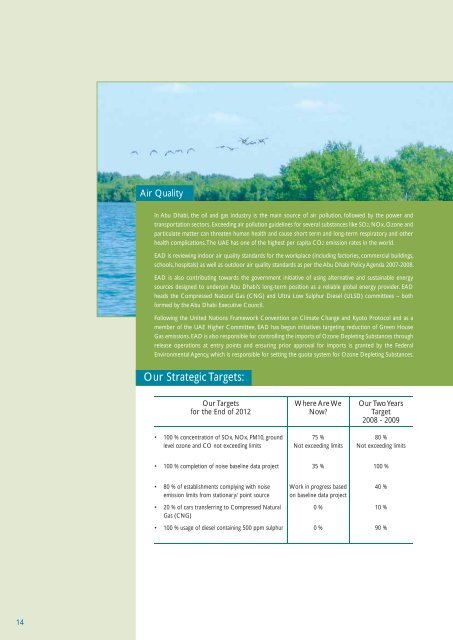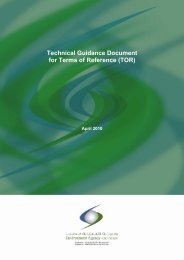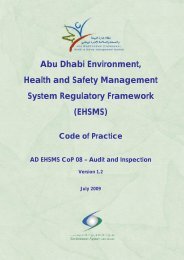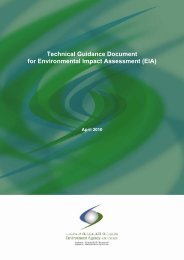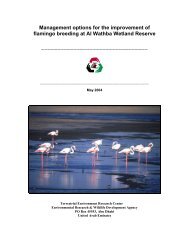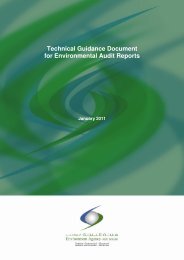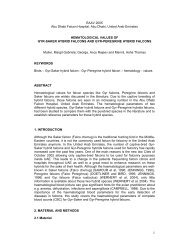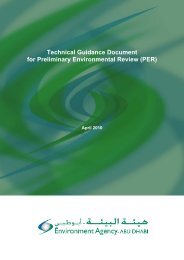Abu Dhabi Environment Strategy 2008-2012
Abu Dhabi Environment Strategy 2008-2012
Abu Dhabi Environment Strategy 2008-2012
- No tags were found...
You also want an ePaper? Increase the reach of your titles
YUMPU automatically turns print PDFs into web optimized ePapers that Google loves.
Air QualityIn <strong>Abu</strong> <strong>Dhabi</strong>, the oil and gas industry is the main source of air pollution, followed by the power andtransportation sectors. Exceeding air pollution guidelines for several substances like SO2, NOx, Ozone andparticulate matter can threaten human health and cause short term and long-term respiratory and otherhealth complications. The UAE has one of the highest per capita CO2 emission rates in the world.EAD is reviewing indoor air quality standards for the workplace (including factories, commercial buildings,schools, hospitals) as well as outdoor air quality standards as per the <strong>Abu</strong> <strong>Dhabi</strong> Policy Agenda 2007-<strong>2008</strong>.EAD is also contributing towards the government initiative of using alternative and sustainable energysources designed to underpin <strong>Abu</strong> <strong>Dhabi</strong>’s long-term position as a reliable global energy provider. EADheads the Compressed Natural Gas (CNG) and Ultra Low Sulphur Diesel (ULSD) committees – bothformed by the <strong>Abu</strong> <strong>Dhabi</strong> Executive Council.Following the United Nations Framework Convention on Climate Change and Kyoto Protocol and as amember of the UAE Higher Committee, EAD has begun initiatives targeting reduction of Green HouseGas emissions. EAD is also responsible for controlling the imports of Ozone Depleting Substances throughrelease operations at entry points and ensuring prior approval for imports is granted by the Federal<strong>Environment</strong>al Agency, which is responsible for setting the quota system for Ozone Depleting Substances.Our Strategic Targets:Our Targetsfor the End of <strong>2012</strong>Where Are WeNow?Our Two YearsTarget<strong>2008</strong> - 2009• 100 % concentration of SOx, NOx, PM10, groundlevel ozone and CO not exceeding limits75 %Not exceeding limits80 %Not exceeding limits• 100 % completion of noise baseline data project35 %100 %• 80 % of establishments complying with noiseemission limits from stationary/ point source• 20 % of cars transferring to Compressed NaturalGas (CNG)• 100 % usage of diesel containing 500 ppm sulphurWork in progress basedon baseline data project0 %0 %40 %10 %90 %14


